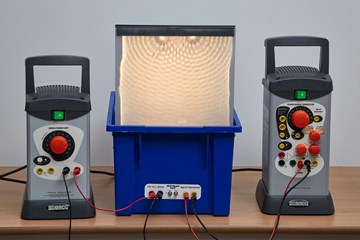KS5 Required Practicals

At KS4/5, required practicals are intended to deepen the scientific knowledge and technical skills of students who have elected to study science to a higher level. Required practicals not only bring more complex theories to life, but equip these future scientists for further study and what could be a lifelong career in the sciences.
Our technical support team have chosen the Biology, Chemistry and Physics required practicals at KS4/5 which they are most commonly asked about.
KS4/5 Biology: Osmosis and Water Potential
Students can use potato cylinders in order to investigate osmosis and water potential at GCSE and A-Level. Their skills in serial dilution are also put to the test during this activity. At GCSE they are expected to calculate the percentage change in mass and length of the cylinders. At A-Level, students are expected to use their knowledge from their GCSEs to create a calibration curve in order to calculate and determine the unknown concentration of a sample.
You will need:
- Bollé Safety B-Line Safety Goggles
- Boiling tubes
- Boiling tube rack
- Scalpel
- Forceps
- White tile
- Cork borer set
- Electronic Balance
- Water Bath (optional)
- Sodium Chloride 1kg
- Sucrose 1kg
- Distilled Water 2.5L
KS4/5 Chemistry: Titrations
Titration skills are developed during GCSE Chemistry courses and are then further developed and enhanced during A-Level Chemistry courses. An acid-base titration is the most straightforward to set up but do often require volumetrically prepared solutions alongside a solution of an unknown concentration. Several stations with labelled burettes can be made available alongside a large volume of prepared reagents. Plenty of distilled water should also be available for rinsing purposes.
CLEAPSS HazCards: 32, 47a, 91a,
CLEAPSS Document GL321 Titration Technique
You will need:
- Bollé Safety B-Line Safety Goggles
- Glass burette (class B) 50ml
- Plastic funnel 38mm diameter
- Burette stand
- Acrylic tile (100mm x 100mm)
- Labelled distilled water bottles
- Hydrochloric Acid 36% - 1L
- Sodium Hydroxide Pellets - 500g
- Phenolphthalein Solution in Ethanol - 500ml
- Methyl Orange Solution - 100ml
- Deionised water – 2.5L
KS4/KS5 Physics: Waves on a String
A method of determining the frequency and wavelength of stationary waves can be set up using a vibration generator and a power signal generator to reflect the appropriate examination boards practical requirements. During the GCSE course students are expected to be able to calculate the wavelength of a standing wave on a string. At A-Level, the practical is expanded for students to explore the variable factors affecting the frequency of a stationary wave.
Product list:
- Vibration generator with accessory kit
- Power signal generator
- String
- Bench pulley
- Mass hanger – B8A73088
Get advice about KS4/5 required practicals
If you have any questions about setting up KS4/5 required practicals, please contact our Technical Support Team via techsupport@philipharris.co.uk






